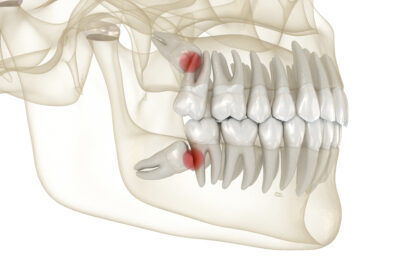Root canal therapy has been around in one form or another since the mid-18th century when dental surgeon Philip Pfaff placed lead and gold pulp caps to protect infected nerve tissue in decaying teeth. Of course, long before and long since the advent of endodontics (dental treatments concerned with the innermost layer of the tooth), people have opted to have painful, damaged, or decayed teeth extracted altogether. Neither root canal therapy nor tooth extraction sound like particularly attractive options. However, treatment is needed to relieve the pain of exposed pulp tissue and avoid the spread of infection to other areas of the body. Your dentist will recommend the best option for you, but understanding the advantages and disadvantages of tooth extractions and root canals will help you make a better informed decision.
When is an Extraction the Best Option?
There are several reasons why your dentist may recommend total extraction:
- The tooth has broken off at the gum line (either to injury or decay).
- The remaining structure cannot support a crown, even with adjunctive measures like a buildup and pins.
- A deep fracture or crack descends into the root portion of the tooth.
- Impacted wisdom teeth push against the neighboring teeth, leading to decay and gum inflammation. Since the hard structure of the tooth and its awkward angle are creating the problem, as opposed to the pulp tissue, root canal therapy is unnecessary.
Ultimately, your dentist wants to preserve as much natural tooth structure as possible, so extractions are only recommended if they’re absolutely necessary. The primary advantages of extraction include lower upfront cost and no possibility of needing retreatment of the root canal. It should be noted though, that removing a tooth entirely can lead to further oral health problems like jawbone deterioration, shifting teeth, and a higher risk for gum disease and tooth decay.
When Should You Opt for a Root Canal?
If your dentist recommends a root canal, it’s because the tooth is robust enough overall to save. While root canal therapy does remove the living part of the tooth, the hard enamel and dentin remain. Once refilled with gutta percha and crowned, the performance and esthetics of the tooth will be restored. However, it’s worth noting that root canal therapy costs more than either a simple or surgical extraction. In addition, you may need a referral to a root canal specialist (endodontist) if your dentist feels it’s in your best interest and, in rare cases, a root canal treatment may fail and require a costly retreatment.
About Shawn Hofkes, DDS
With advanced training in oral and maxillofacial surgery and certification in oral and IV sedation, Shawn Hofkes, DDS provides advanced dentistry including safe, comfortable surgical extractions from our state-of-the-art dentist office in Cerritos, CA. To schedule your appointment or consultation with Dr. Hofkes, contact us today. We proudly serve patients of all ages from Cerritos, Lakewood, Long Beach, Buena Park, and all surrounding communities.














